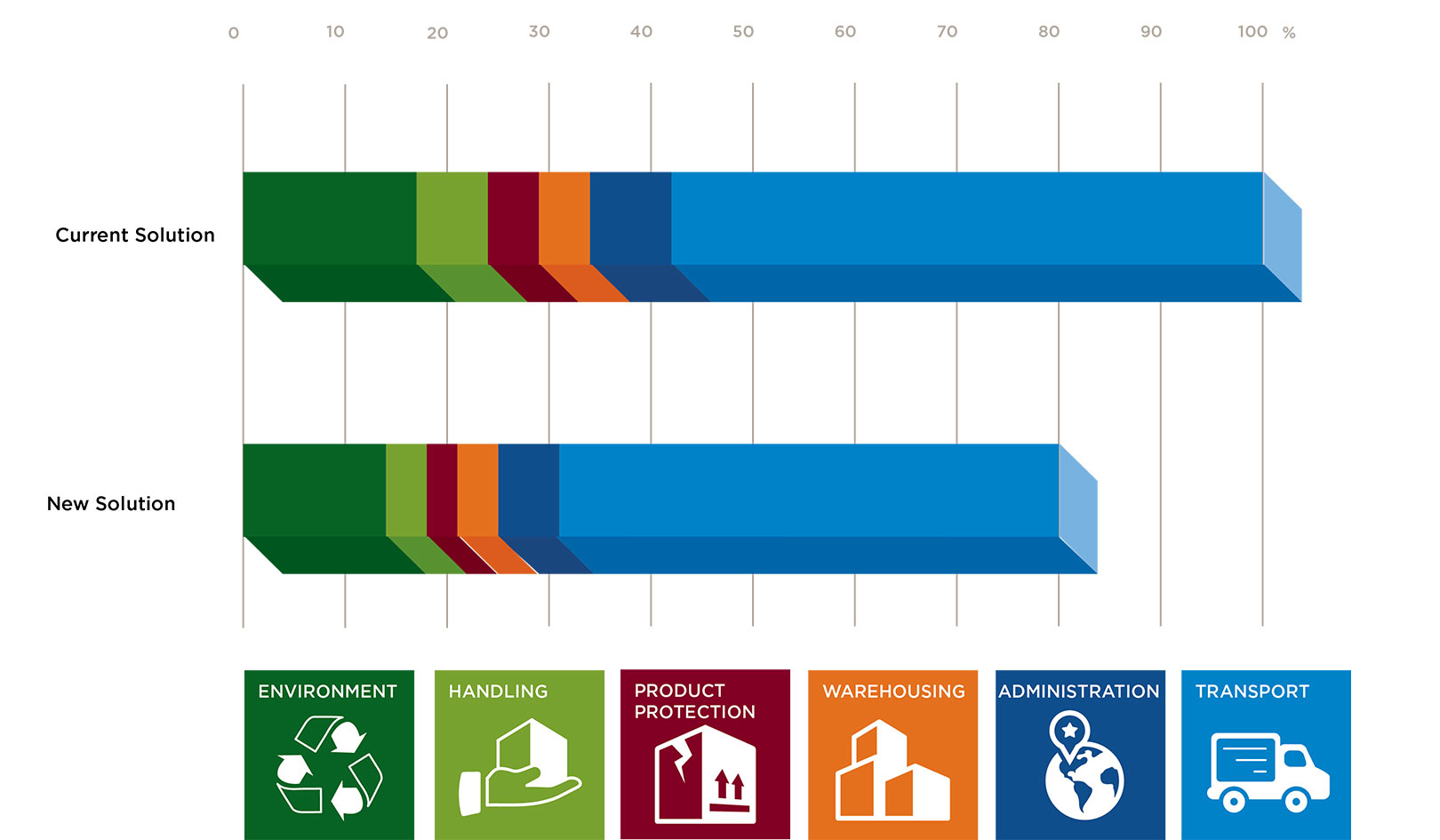The type of packaging and its size and weight affect almost every other part of the supply chain, including transport, packaging cost, the impact on the environment, and the time your employees spend on preparing each package. All of these things should be considered when designing a packaging solution. Each part of the design process should analyze how the packaging solution will affect the overall shipping process.
Transport
Transporting products may very well be your largest cost, aside from manufacturing of course. This is especially true if the products you are producing are large, heavy or oddly shaped. The weight can make air transportation costly, while bulky or awkward shapes often result in wasted or empty space in sea shipping containers. Large products may be difficult to fit into trucks and therefore require additional vehicles. Designing packaging solutions that provide protection without using too much material or creating empty space is the key to lowering your transportation cost and making the process more efficient. Optimizing the size of you packaging solutions may mean that you can fit additional packages in a shipping container, truck, or plane. Replacing a heavy material with something lighter can also greatly affect transportation.
Cost
The amount of money you spend on your packaging solutions is determined by the material used, the size, volume and several other factors. Oftentimes, all of these factors are determined by what you are shipping. Some fragile items will need more durable packaging, while other products may not need nearly as much. Determine what your packing needs comes first, then start looking at designs that meet all those needs. Be sure you stop when your needs are met – creating packaging that provides more than necessary often costs you more without providing any true benefit.
Safety
Heavy, bulky or awkwardly shaped, or large packaging can be difficult for your employees, as well as various others involved in the shipping process, to handle. These packages could be dropped or could fall off shelving, putting people at risk or potentially damaging the products contained within. By designing a packaging solution with its handling in mind, and after putting it through appropriate testing, you’ll be able to ensure that your packaging solutions provides the right protection and are easy to handle.
Environmental Impact
The packing materials and the process needed to create those materials can greatly impact the environment. In the past, traditional packing materials were made from things such as Styrofoam. These materials were often discarded after being used just once. They were also not biodegradable, leading to a large amount of Styrofoam, as well as other types of packaging, building up in landfills around the world. Some of the materials used to manufacture the containers themselves also had a fairly large impact on the environment.
Today, thanks to a number of improvements in technology, many types of new packing materials are available. Many of these have much less impact on the environment. Because of the push to go green, many companies now consider the environmental impact when looking at packaging solutions. Neither customers nor your business partners want to deal with a large amount of waste when receiving packages, plus some consumers will go out of their way to avoid companies that are not committed to using sustainable practices. Going green, then, may not just save you money but it may also grow your customer base.
The Process
Creating a packaging solution that provides everything your products need while also reducing cost, improving safety, and minimally impacting the environment, is accomplished through a packaging design process. Here are the steps taken in designing packaging solutions.
Design
The first step is design. Generally, you don’t do this yourself. Instead, you work with a company such as Nefab that specializes in packaging solutions. These experts understand everything required for packaging, and they will work with you to create an initial design that meets all of your needs.
Prototyping
Once the design is finished, you’ll get a chance to look at the prototype. Thanks to 3D printing and other easy, fast, and affordable manufacturing processes, it no longer takes weeks to get a working prototype. You’ll be able to handle the prototype and even package up a product in it to determine if it meets your needs.
Testing
Testing packaging is an art form. Every product and industry has specific needs and requirements for their product protection and testing requirements. The packaging goes through the appropriate tests to verify that the design provides the durability/protection needed. These comprehensive tests will highlight any weak areas in the packaging that could lead to damaged products.
Redesign
If the packaging solution doesn’t meet your needs or if it fails any of the various tests, it’s back to the design phase. The packaging design will be adjusted as needed in order to correct all of the discovered issues. Once that’s done, another prototype will be created and put through testing. This cycle continues until you’re happy with the final design and it has passed all of the testing.
Your packaging is shipped to you
Finally, your packaging solution will be manufactured and shipped to you in the most efficient way possible. Rather than shipping empty crates, new shipping solutions are often designed to be shipped flat. This packaging can then be quickly assembled, often with few or no tools.
Nefab is here for you
Now that you’ve seen how your packaging solution affects so much, you may realize that you need a new solution that lowers your cost or makes transportation more effective. Nefab is here to work with you on that design. Contact us today to learn more and to discuss what we can do for you.

